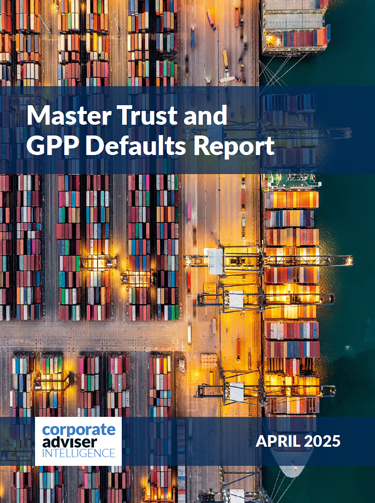The phrase ‘risk aversion’ could have been invented to describe the antipathy most people show towards anything to do with group life, income protection and critical illness cover. Turning that situation on its head is now the day job of newly appointed Group Risk Development (GRiD) spokesperson Katharine Moxham.
Her appointment marks the latest stage in the evolution of a revitalised GRiD that has also seen the launch of its new examinations in conjunction with the CII and a revamp of its website.
Active promotion of the benefits of group risk is new ground for the sector. For Moxham, the former consulting director, health and risk, at Jardine Lloyd Thompson it is an entirely new career direction. Having turned her back on day to day consultancy work, Moxham’s time is now spent plotting how to raise awareness of the value of group life, income protection and critical illness. Meeting her, she sounds generally enthused at her new direction. “For me this is a fabulous opportunity. It is everything I love doing and none of the things that I do not like doing,” she says.
To say that the initiative has the backing of the industry is something of an understatement. Providers and advisers have been unanimous in their calls for a higher profile for group risk products. At the February 2009 Group Risk Adviser Forum, hosted by Corporate Adviser, 92 per cent of delegates said the biggest reason for the lack of growth in the market was a low appreciation of the value of group risk products amongst employers and the wider public. But interestingly, when asked whose responsibility it is to promote the value of group risk products, delegates’ responses were split 33 per cent for providers, 25 per cent for advisers, 25 per cent for GRiD and 17 per cent for the ABI.
Debate as to who should take matters forward is now academic, with Moxham and Teamspirit, the public relations team appointed to work with her, taking up the baton and planning how to get group risk matters up the agenda of employers, employees and policymakers.
“My key aims are to raise the public profile of group risk by addressing the key barriers to growth and capitalising on the scale of the players in the market and arranging collaboration with them,” says Moxham.
The key audiences for GRiD’s new media activities are employers, regulators and those forming legislation, but the end user will not be targeted at this stage. “If we had been launching this initiative 12 months ago then the end user would have been a key target, but a lot has happened since then and it is more effective for us to focus on businesses, government and those forming policy,” says Moxham.
“We want to forge relations with the Institute of directors, the Confederation of British Industry and the Federation of Small Businesses,” says Moxham. “And we will be targeting trade press in the accountancy general business, HR and occupational health areas, as well as national press. The aim is to demonstrate the value of putting in place group risk. We want to equip employers so they can communicate and demonstrate the relevance and importance of group risk.
“The programme will be issues led. We will be helping employers to understand welfare reform, writing articles, and giving masterclasses for journalists. We will also be telling employers about social reward statements and how to prepare them,” she says.
Moxham is keen for her role to be that of an effective and comprehensive mouthpiece of the industry and she is currently at the stage of doing the rounds meeting stakeholders to allow her to absorb the views she is being paid to reflect. As with any organisation with a wide spread of members, there will be areas of disagreement and Moxham says GRiD’s role will be to comment only where there is broad unanimity across the industry.
“The challenge is to remain independent and not to favour one provider or adviser over another,” she says. “But there are good examples where work has been done in the community together and we intend to build on that going forward.”
So now GRiD has a public voice, who decides what it will say? “We need to establish protocols, but ultimately the GRiD steering committee has the veto over decisions. For example we would not comment on specific products. But at the annual general meeting the membership was enthusiastic about this new initiative. There will come a time however when we have to consider when we can and cannot come out with a view on a particular story,” says Moxham.
GRiD’s membership is made up of around 38 intermediaries, 16 insurers, three reinsurers and five other parties, who have seen their annual subscription rise more than thirteen-fold to pay for this new industry marketing initiative. That might seem a big price hike, until you learn that members, providers and intermediaries alike, had been paying a paltry £150 a year.
“This is an increase, but it is for a reason. It may come down in the future but we had to decide on an appropriate amount,” says Moxham.
So is it a case that you get what you pay for? “Well it is fair to say very little public-facing work has happened until now.”
The group risk industry has in the past been getting considerably more that one might expect from £150 a year per organisation, thanks to the tireless unpaid work of some individuals in the realm of the creation of the new exams and lobbying. This is a situation that Moxham likens to the handful of parents who do all the work at the school fete. “The exams took up 70 to 80 per cent of some individuals’ time,” she says. “Some people’s contribution to the industry through GRiD has been enormous.”
So what issues are we likely to hear Moxham voicing her, and the industry’s opinions on? “A lot of my new job is reactionary. There are a lot of issues coming out of the current state of the market, with the Budget and high earners becoming disengaged from pensions. There are also the developments around personal accounts and what that means for the group risk arena. There is huge potential for the industry from these changes,” she says.
Moxham sees the predicted next wave of closure of final salary schemes following the Budget’s clobbering of pensions as a perfect opportunity to promote the value of group risk as a substitute for ill health early retirement options. “The group risk industry missed the boat that left when the closing of DB schemes started. This is the ideal opportunity to catch that boat a second time around. There will be a scheme redesigns as a result of the current environment, the Budget and the pressure on employers’ profit margins, and as the remaining schemes close this should be a golden opportunity for group risk.
“Another issue we are looking at its paternalism of employers. Historically the UK benefits package has been paternalistic, giving more than the state provides. But is it likely to be like that going forward? How reasonable is it to continue this paternalistic approach? And if the government wants to encourage this paternalism, then incentives should be given to employers for doing so, by allowing them to contract out of the state system. Benefits would be done and dusted in the private sector before state benefits are in payment, so why should not employers be rewarded for that?”
Moxham also wants to see a more active and visible role in the lobbying over the way government and industry interacts. “For example, look at the Nice guidelines – yes these are great but where are the resources going to come from? If you already have an industry already doing vocational rehabilitation then why not take advantage of it and take some of this strain out of the state system? These are issues that we will be raising with government,” she says.
Moxham will be judged by her results. But as far as visibility of public awareness of group risk matters is concerned, the only way is up. corporate adviser month 2009corporate adviser month 2009Katharine Moxham From Ecuador to Newbury”I have never done an industry exam, although I am doing the GRiD exam at the moment.”Born Ecuador. “My father was in the Foreign Office, and we travelled around a fair bit. I also lived in Vancouver, Canada and Nairobi, Kenya while I was growing up.
Left school at age 17 and joined NEL in Dorking, Surrey. Spent 10 years at the company.1986 Joined Towers Perrin, initially in pensions administration. Later set up a group insurance arm there, before leaving in 1996 for a family break.2004 Joined Aon.2006 Moved to Jardine Lloyd Thompson as consulting director, health and risk
Career high “Working with extremely challenging clients at Aon, which enabled me to develop my expertise in absence management. Being asked to meet their exacting objectives and managing to achieve that was a moment of great satisfaction for me. However, I recall that the toughness of one particular client was also my career low.”
Family “I have three children, aged 18, 13 and eight. We live in Newbury in Berkshire.
Enjoys Gardening, theatre. “We have a very good local theatre where I live.”
Claim to fame “Getting to where I have got while being the least qualified person in this industry. I have never done an industry exam, although I am doing the GRiD exam at the moment.”




